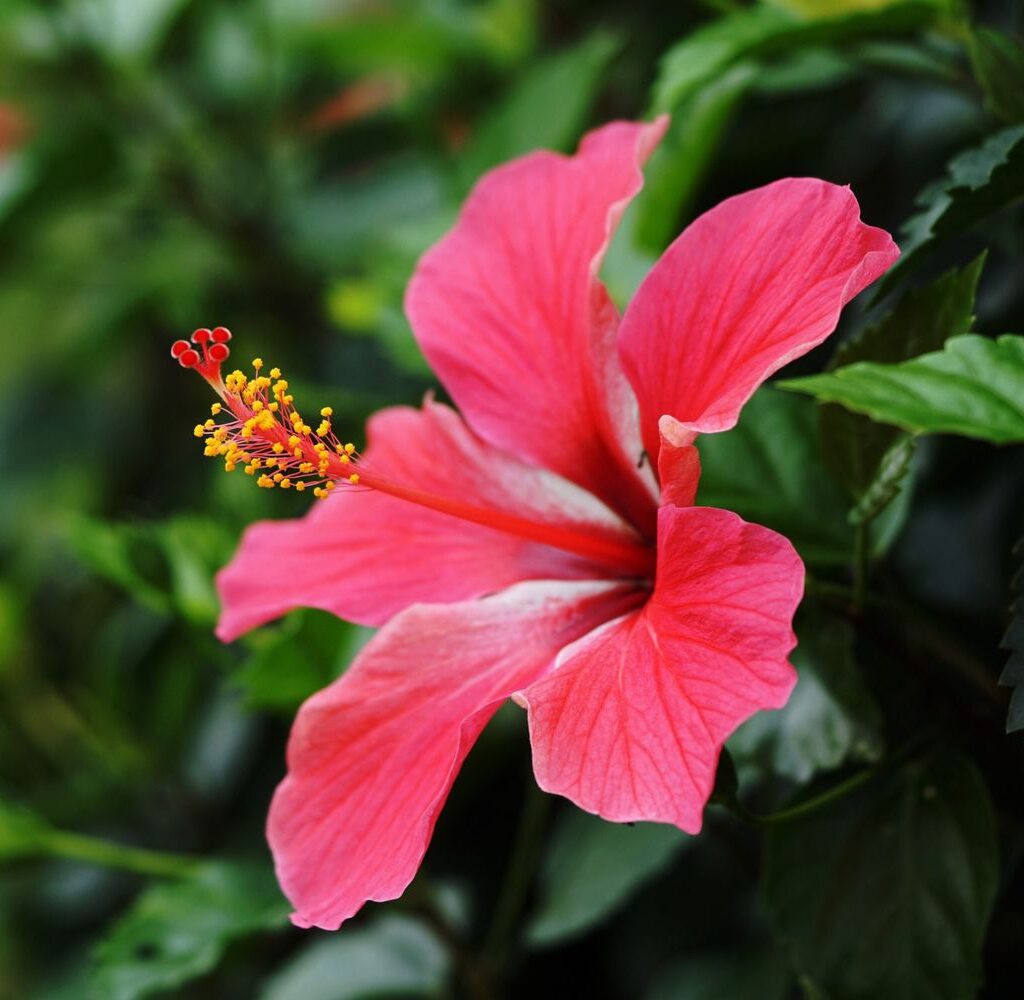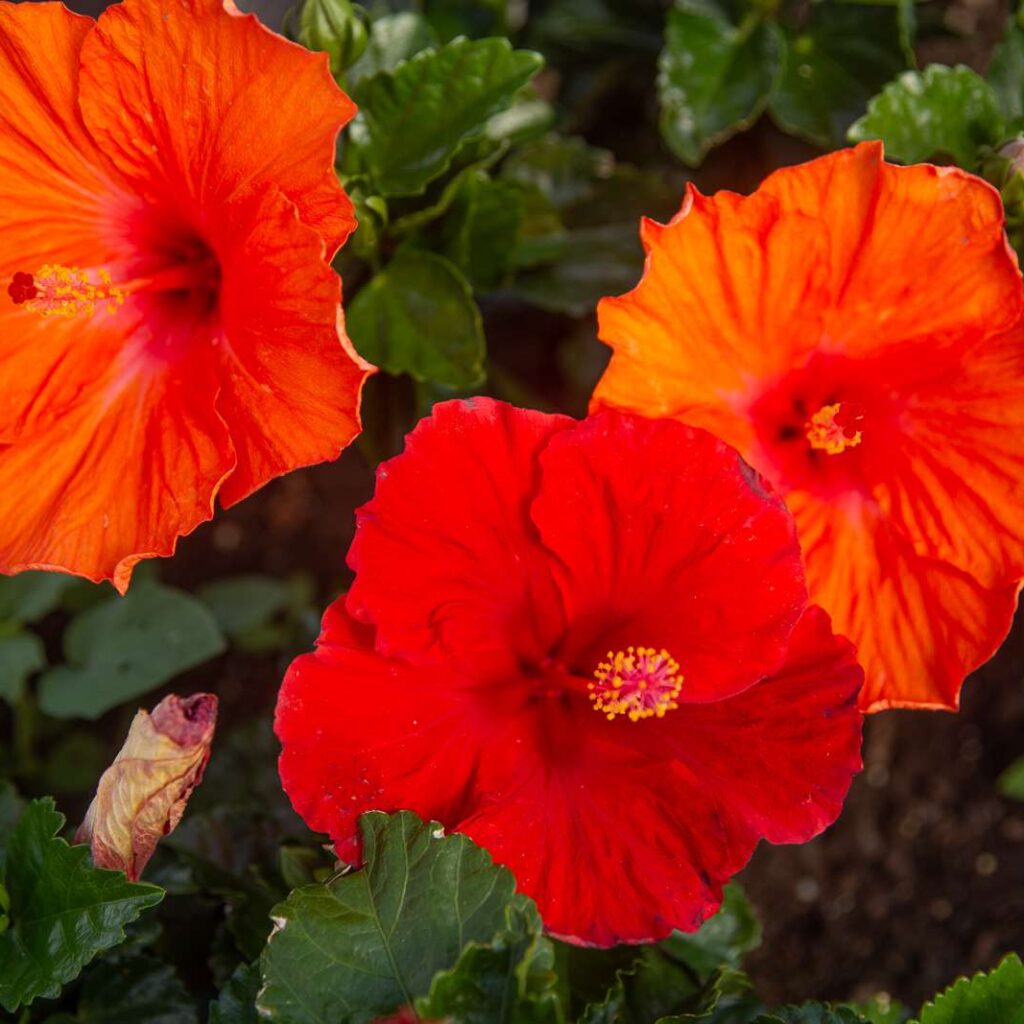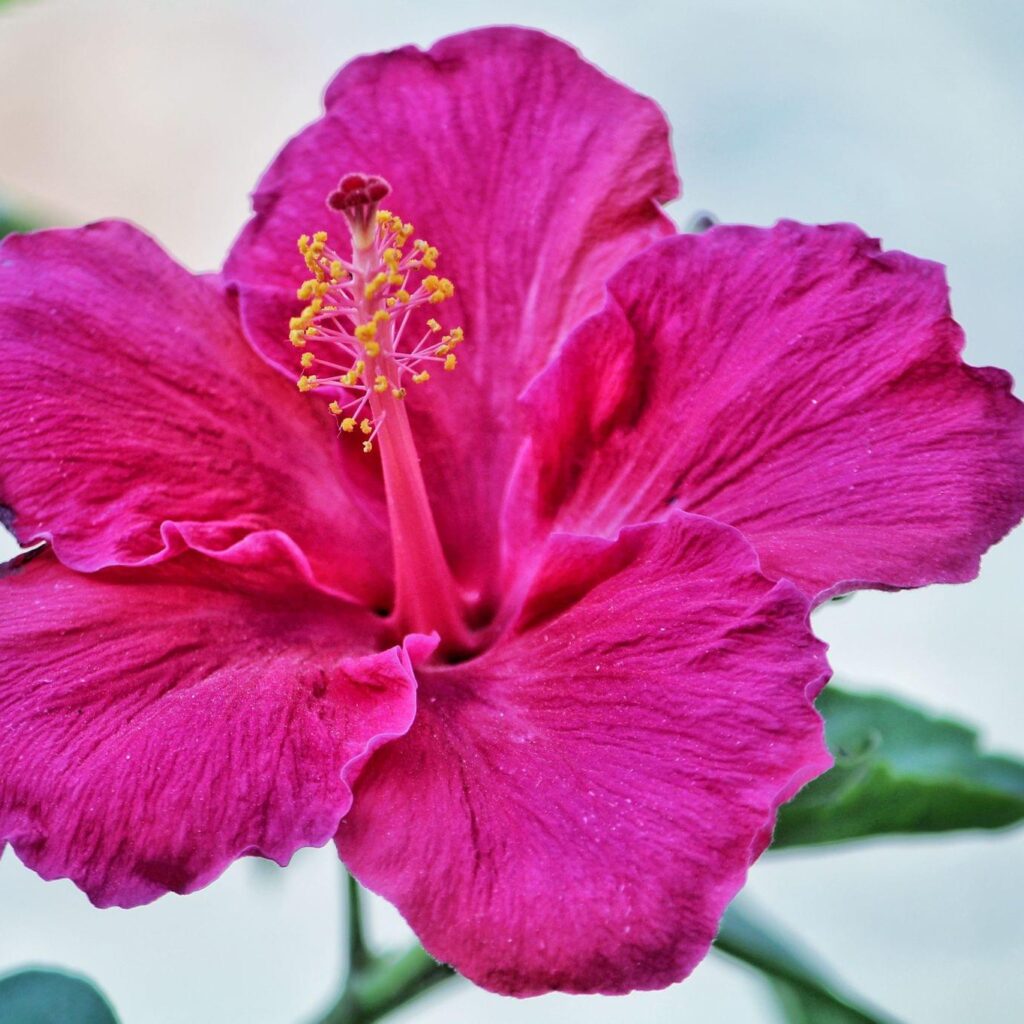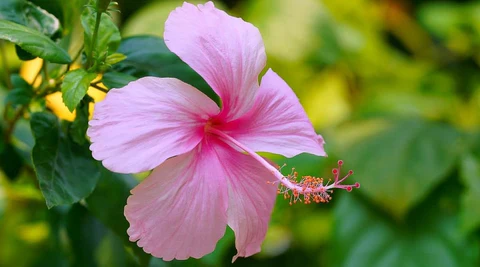With their lush foliage and dazzling blooms, hibiscus plants are the jewels of tropical and subtropical gardens. Whether planted outdoors in warm regions or grown in containers indoors, hibiscus adds vibrant color, exotic appeal, and tropical charm to any setting. Their wide range of varieties and vivid hues—ranging from fiery reds and oranges to soft pinks and bright yellows—make them a gardener’s favorite. But to enjoy their full glory, it’s important to know how to properly care for them. This guide will help you master the art of growing hibiscus with ease.
1. Understanding the Hibiscus Plant

Before you dive into planting, it’s crucial to understand the two main types of hibiscus:
- Tropical Hibiscus (Hibiscus rosa-sinensis): These are the vibrant, glossy-leaved plants commonly grown in warmer climates or as houseplants. They are not frost-hardy.
- Hardy Hibiscus (Hibiscus moscheutos): These can survive in cooler climates and go dormant in winter. They have large dinner-plate-sized blooms and return each year.
Each type has unique care needs, but both are rewarding additions to gardens and patios.
2. Choosing the Right Location

Hibiscus thrives in locations that mimic their tropical origins. Here’s how to choose the perfect spot:
- Full Sun: Hibiscus loves the sun and needs at least 6–8 hours of direct sunlight daily. In cooler climates, a sunny south-facing wall works well.
- Shelter from Wind: While they enjoy the sun, hibiscus dislikes strong winds, which can damage blooms and tender leaves. Plant them in a spot that offers some natural windbreak.
- Good Air Circulation: Avoid tight corners with stagnant air. This helps prevent fungal diseases.
3. Soil Requirements
A good soil foundation is essential for healthy growth:
- Well-Draining Soil: Hibiscus hates “wet feet.” Sandy loam or garden soil enriched with compost is ideal.
- Slightly Acidic pH: Hibiscus prefers soil with a pH between 6.0 and 7.0.
- Add Organic Matter: Compost or aged manure helps improve soil texture and fertility.
Tip: Avoid heavy clay soils unless amended with sand or perlite to improve drainage.
4. Watering the Right Way
Watering hibiscus properly is crucial:
- Tropical Hibiscus: Water frequently but ensure the soil drains well. In hot weather, you might need to water daily.
- Hardy Hibiscus: Needs deep watering during dry spells. Reduce watering in winter.
- Container Plants: Dry out faster than garden soil. Water until it drains from the bottom, but don’t let them sit in water.
Warning: Overwatering leads to root rot, while underwatering causes buds to drop.
5. Fertilizing for Blooms

Feeding hibiscus regularly helps produce those iconic, bold flowers:
- High Potassium Fertilizer: Use a balanced fertilizer like 10-10-10 early in the season, and switch to one with higher potassium (e.g., 5-10-20) for better blooms.
- Frequency: Feed every 2 weeks during the growing season (spring through early fall).
- Avoid Too Much Nitrogen: Excess nitrogen leads to lots of green leaves but few flowers.
You can also add Epsom salts once a month to provide magnesium, which promotes leaf health and flower production.
6. Pruning for Shape and Strength
Pruning hibiscus not only shapes the plant but also stimulates new growth:
- Best Time: Late winter or early spring, before new growth starts.
- How to Prune: Cut back weak or crossing branches. For bushier growth, trim 1/3 of the plant’s height.
- Pinch Tips: Regular pinching of growing tips during the season encourages more branches and flowers.
Hard pruning can be done every couple of years to rejuvenate older plants.
7. Dealing with Pests and Diseases

Hibiscus plants can occasionally suffer from pests or diseases. Here are common issues and how to treat them:
- Aphids, Whiteflies & Spider Mites: Use insecticidal soap or neem oil spray. A strong water blast can also dislodge them.
- Yellowing Leaves: Could indicate overwatering, root rot, or nutrient deficiency.
- Bud Drop: Often caused by underwatering, temperature shock, or pest infestations.
Inspect your plant regularly and treat early to prevent major problems.
8. Temperature and Seasonal Care
Hibiscus thrives in warm climates, but care varies by season:
- Tropical Hibiscus: Bring indoors or protect if temperatures drop below 50°F (10°C). They dislike cold drafts and sudden temperature changes.
- Hardy Hibiscus: Dies back in winter and reemerges in spring. Mulch the base in late fall to protect roots.
- Container Plants: Move to a sunny indoor location in cold months. Reduce watering and don’t fertilize during dormancy.
9. Propagating Hibiscus

Want more plants for free? Hibiscus is easy to propagate:
- Stem Cuttings: Take 4–6 inch green cuttings in spring or early summer.
- Rooting Medium: Place in moist potting mix or water. Use rooting hormone for faster results.
- Rooting Time: Roots develop in 4–6 weeks. Transfer to pots or garden once roots are strong.
10. Growing Hibiscus in Containers
Container hibiscus is perfect for patios or small spaces:
- Use Large Pots: Minimum 12–16 inches in diameter to accommodate roots.
- Good Drainage: Ensure drainage holes and use a mix of potting soil and sand.
- Water Often: Pots dry quickly, so check daily.
- Rotate Regularly: Turn the pot weekly so all sides get sunlight and even growth.
Container plants can also be moved indoors during colder seasons, extending their life.
11. Fun Varieties to Try
There are many hibiscus cultivars to choose from. Some popular options include:
- ‘Painted Lady’ (Tropical): Red and pink bicolor flowers.
- ‘Lord Baltimore’ (Hardy): Deep red blooms, vigorous grower.
- ‘Blue River II’ (Hardy): White flowers with dark green leaves.
- Double-flowered Hibiscus: Unique layered petals for a fuller bloom.
Choose based on your climate and color preference for a dazzling display.
12. Conclusion: The Beauty of Growing Hibiscus
Hibiscus is more than just a flower—it’s a symbol of warmth, passion, and tropical elegance. With the right care, these showstoppers will reward you with continuous blooms and lush foliage all season long. From gardens to balconies, and from tropical landscapes to indoor corners, hibiscus brings bold beauty wherever it grows.
So whether you’re a beginner or a seasoned gardener, let hibiscus add a splash of tropical magic to your green space. Follow these tips, provide a little love and attention, and you’ll enjoy hibiscus blooms that are as bright and beautiful as the sun-soaked islands they originate from.



